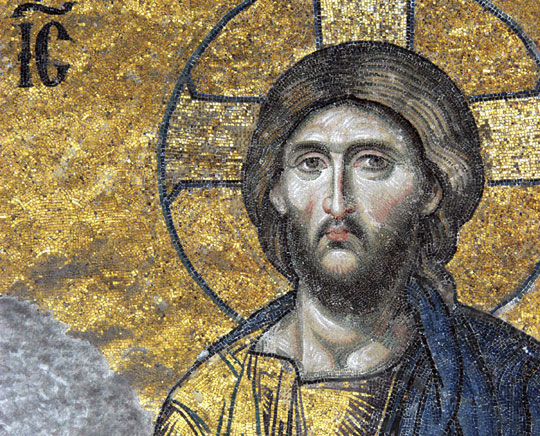Identified Jesus' great-grandfather
Jesus' great-grandfather was a woman named Ismeria - a descendant of the tribe under the Jewish King David, according to an analysis by a historian of medieval records of Florence.

Historian Catherine Lawless argues that Jesus' great-grandfather is a woman named Ismeria. (Photo: Istock).
The legend of St. Ismeria is published in a new issue of the Medieval History Journal. It clarified many things about the Virgin Mary's family in the Bible as well as the religious and cultural values of Florence in the 14th century.
Catherine Lawless - a history lecturer at the University of Limerick (Ireland) and also the author of a new study, said: " I don't think any other woman (besides Mrs. Ismeria) is mentioned as a German grandmother. Virgin mother Maria in the Bible . The Mother herself is also mentioned very little in the Bible . "
Ms. Lawless studied the story of St. Ismeria - which, according to her, " was neglected by scholars " - in the two 14-century " MS Panciatichiano 40 " records of the National Library of Florence and " MS 1052 "in the 15th century of the Library Riccardiana also in Florence.
" According to legend, Ismeria is the daughter of Nabon, a native of Judea and a tribe of King David, " Lawless historian wrote. Ismeria is married to " Santo Liseo ", the character described as " a patriarch of God's people" . Legend has it that the couple gave birth to a daughter named Anne, who married Joachim. After 12 years, Liseo died. The relatives later abandoned Ms. Ismeria without a penny.
" One of me is quite sure to believe that it was either her husband's death or her relative, less likely to be a family, when she was born ," Lawless said. " The families of the Virgin Mary will not get the role in such light ."
Ismeria then went to a hospice and found a shelter here. She is said to have performed a miracle, filling fish to feed all the hospice patients. After this miracle, she prayed to be freed from the " glory of this world ".
After God called Mrs. Ismeria to " heaven ", a hospice leader informed the Virgin Mary and Jesus of her departure. They set out for the hospice with 12 apostles, Mary Magdalene, Mary Salome and Mary Cleophas to see off the soul of St. Ismeria.
This legend marks a change in faith, when sacredness was often honored from bloody martyrdom rather than devotion.
Lawless historian points out that " the great part of Christian martyrs was killed under Roman persecution that ended in the 4th century . " While the author has not yet identified the legend of St. Ismeria, Ms. Lawless said it could be the product of a layman from Tuscany. In the Middle Ages, " the story may have been used as a model for the patience of a wife and a widow to do charitable activities at one of the many hospice in Florence in the medieval period. ".
" The Virgin's grandmother was not a widow threatening her grandchildren's possessions by claiming her dowry, or threatening the family by remarrying and starting another lineage. Instead, her life can be seen as an ideal model for penitential Florentine women , "Ms. Lawless added.
George Ferzoco, a researcher at Bristol University, assessed the Lawless author's analysis of the legend of Is Isia as "striking" and " revealing an interesting discovery of religious literature from the late medieval period." and the revival of Florence, where a lot of records were written specifically for women ".
- The 'Dollar' is named after the grandfather of Jesus
- Found the place where Jesus might be a child
- The body of the skeleton reveals the life and death of Jesus
- The search for the living descendant of Jesus
- The shape of Jesus' tree was worshiped by Argentines
- Research reveals the shape of Jesus
- Determining the day when Jesus was executed?
- Found the tomb of Jesus?
- Controversy around the body of Jesus' corpse box
- Ancient tomb marks prove that Jesus once had a wife and son
- Inside the church contains the tomb of Jesus
- Admire the true content of Jesus
 Discovered an ancient centipede fossil 99 million years old
Discovered an ancient centipede fossil 99 million years old Discovered bat-like dinosaurs in China
Discovered bat-like dinosaurs in China Discovered a 200-year-old bronze cannon of the coast
Discovered a 200-year-old bronze cannon of the coast Discover 305 million-year-old spider fossils
Discover 305 million-year-old spider fossils